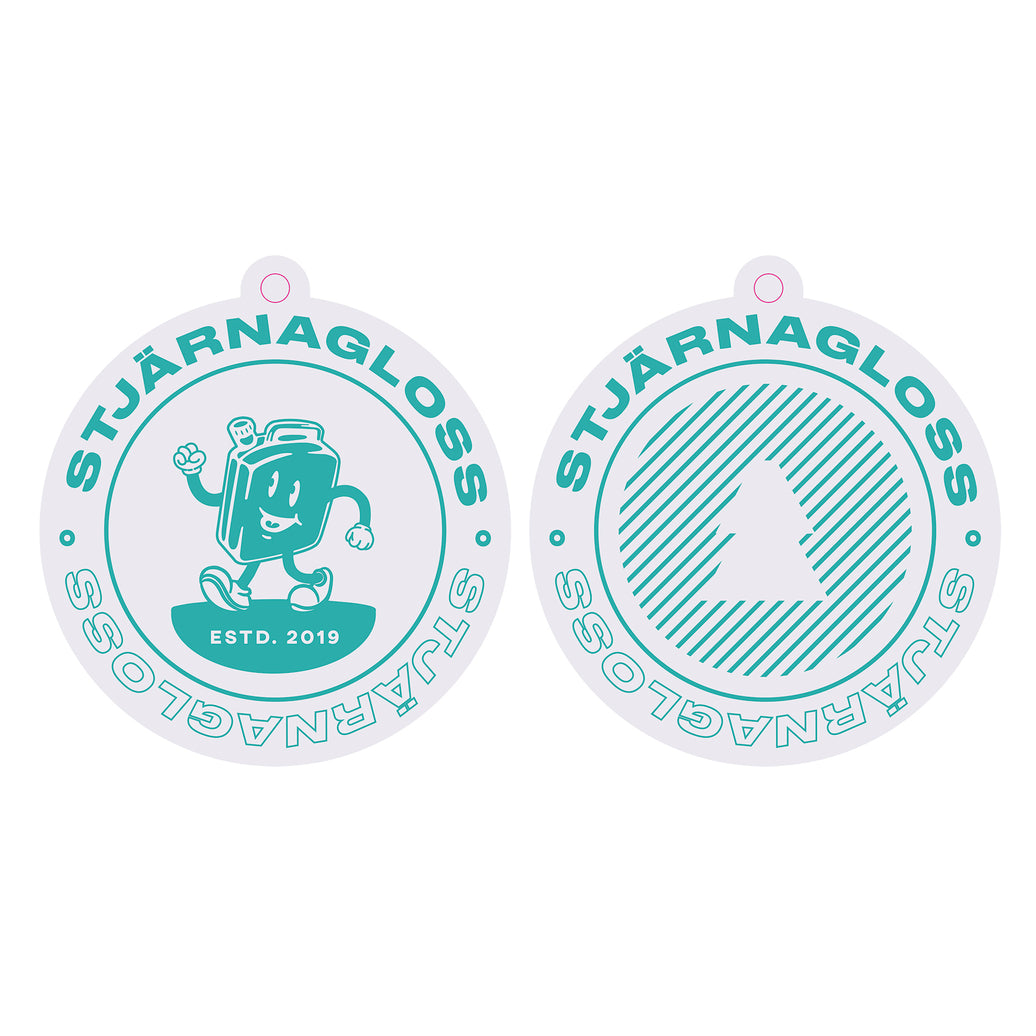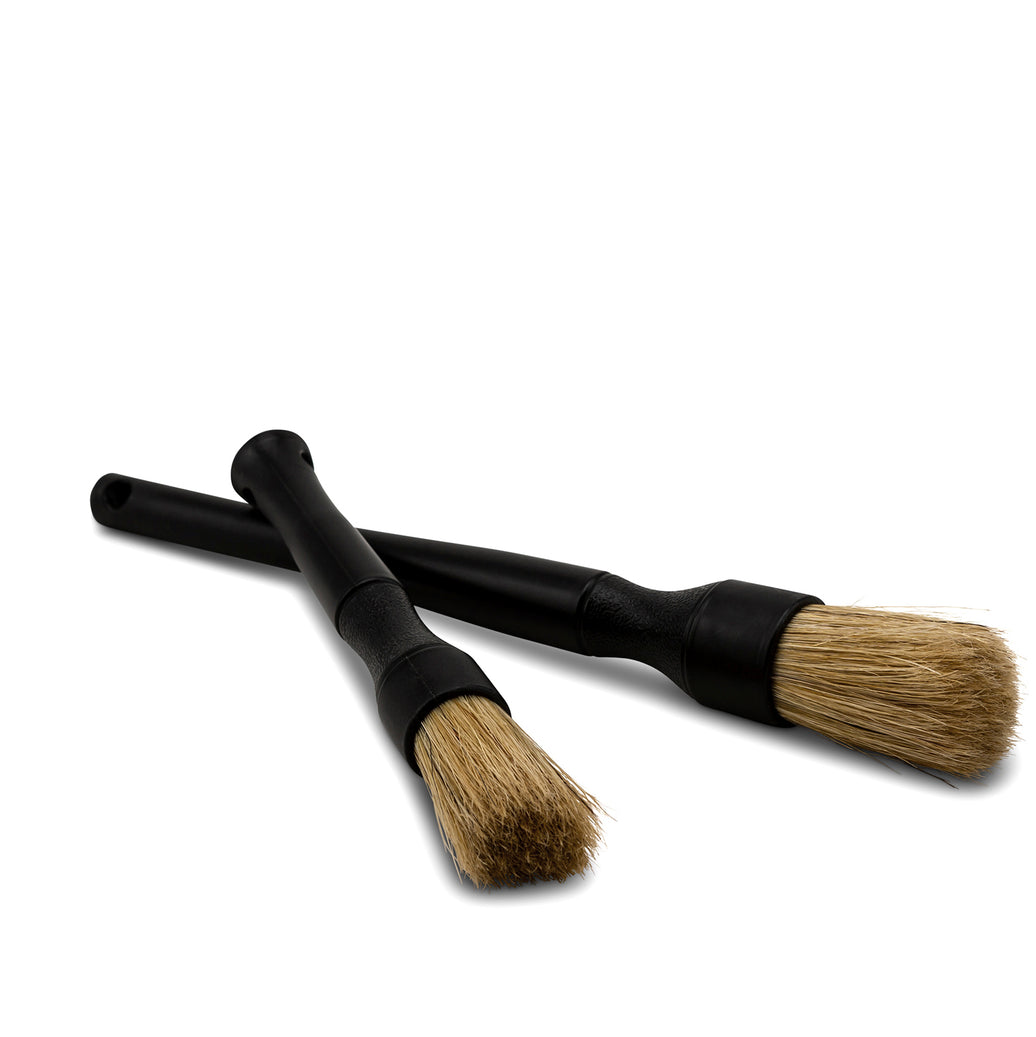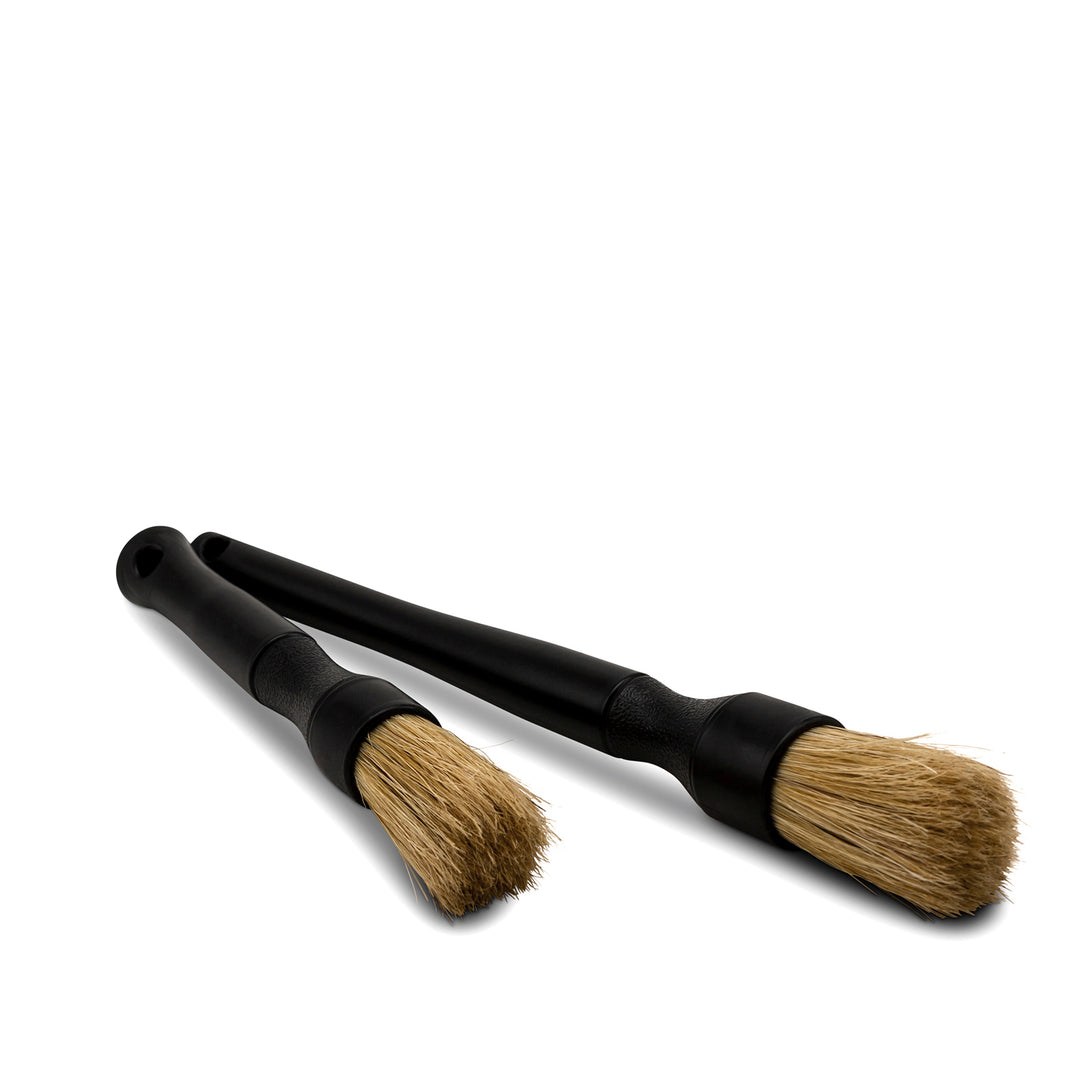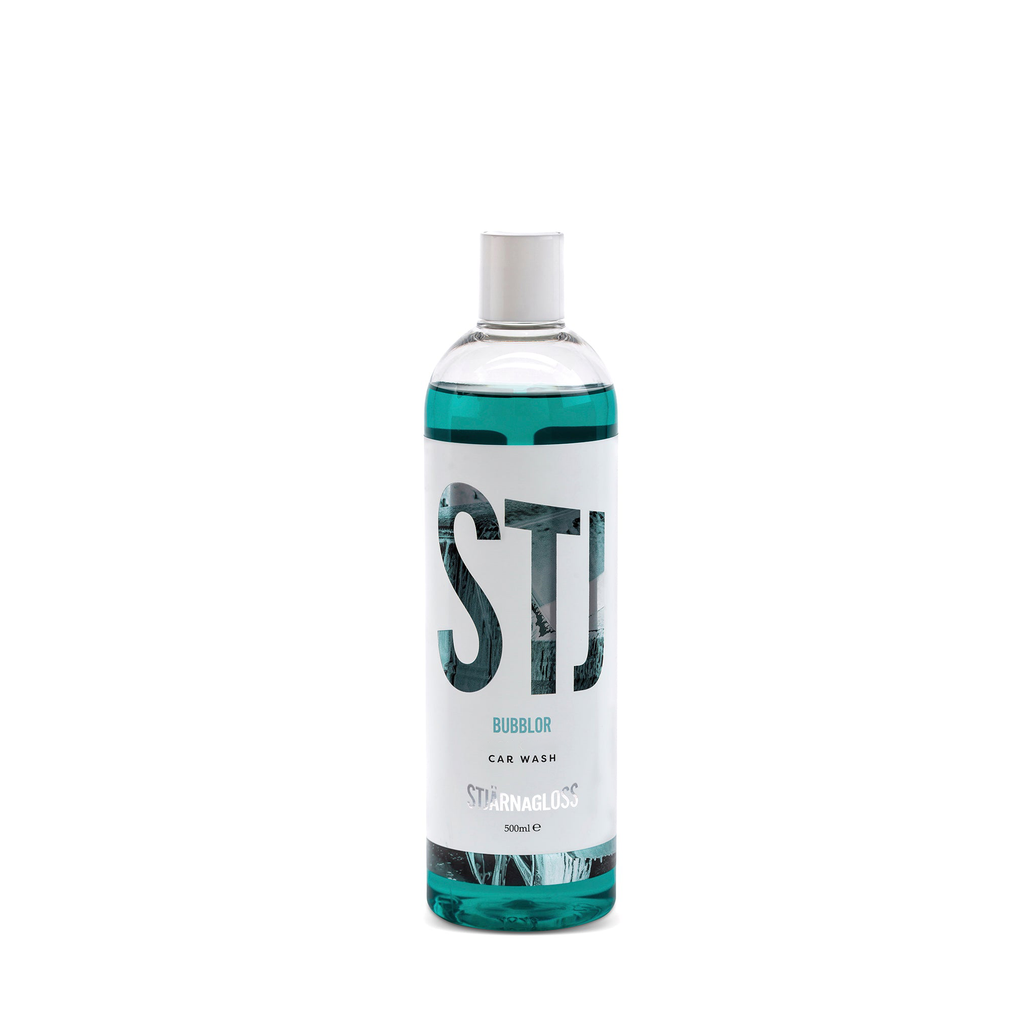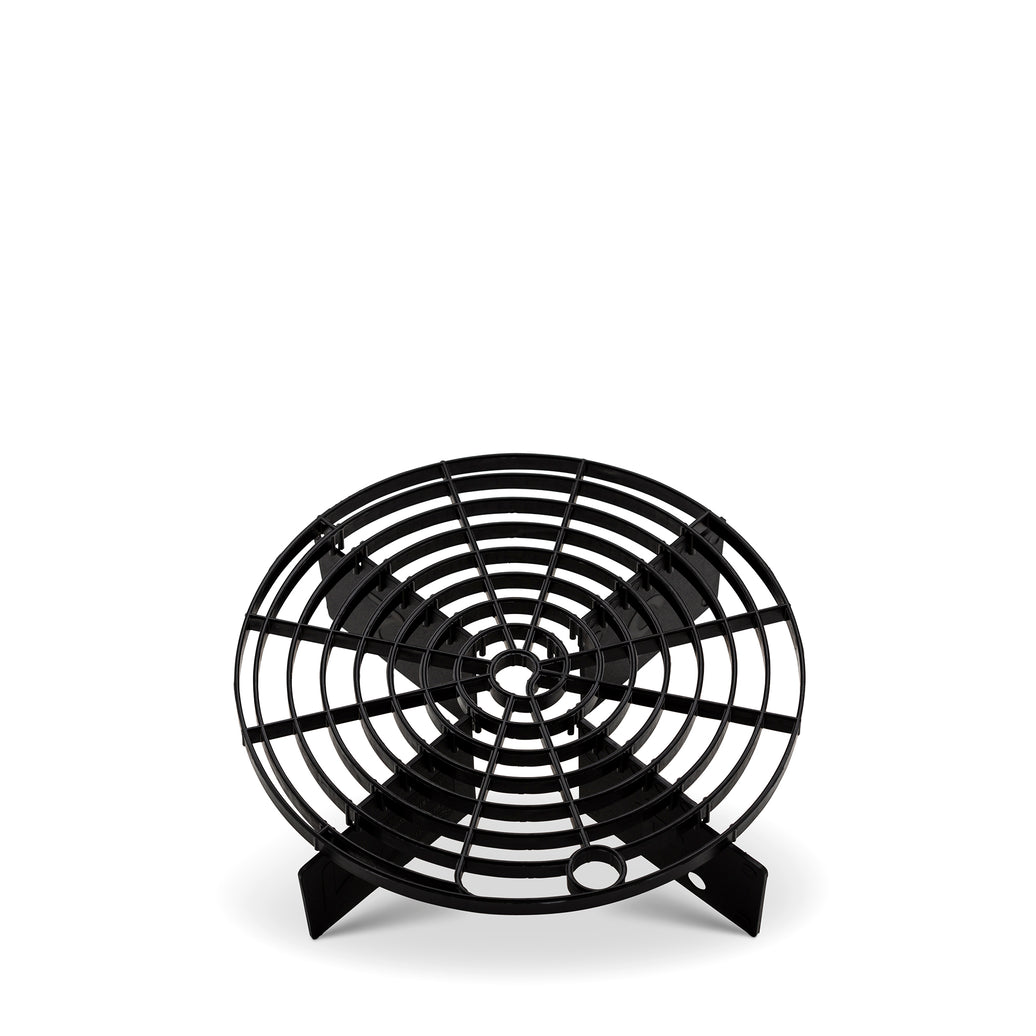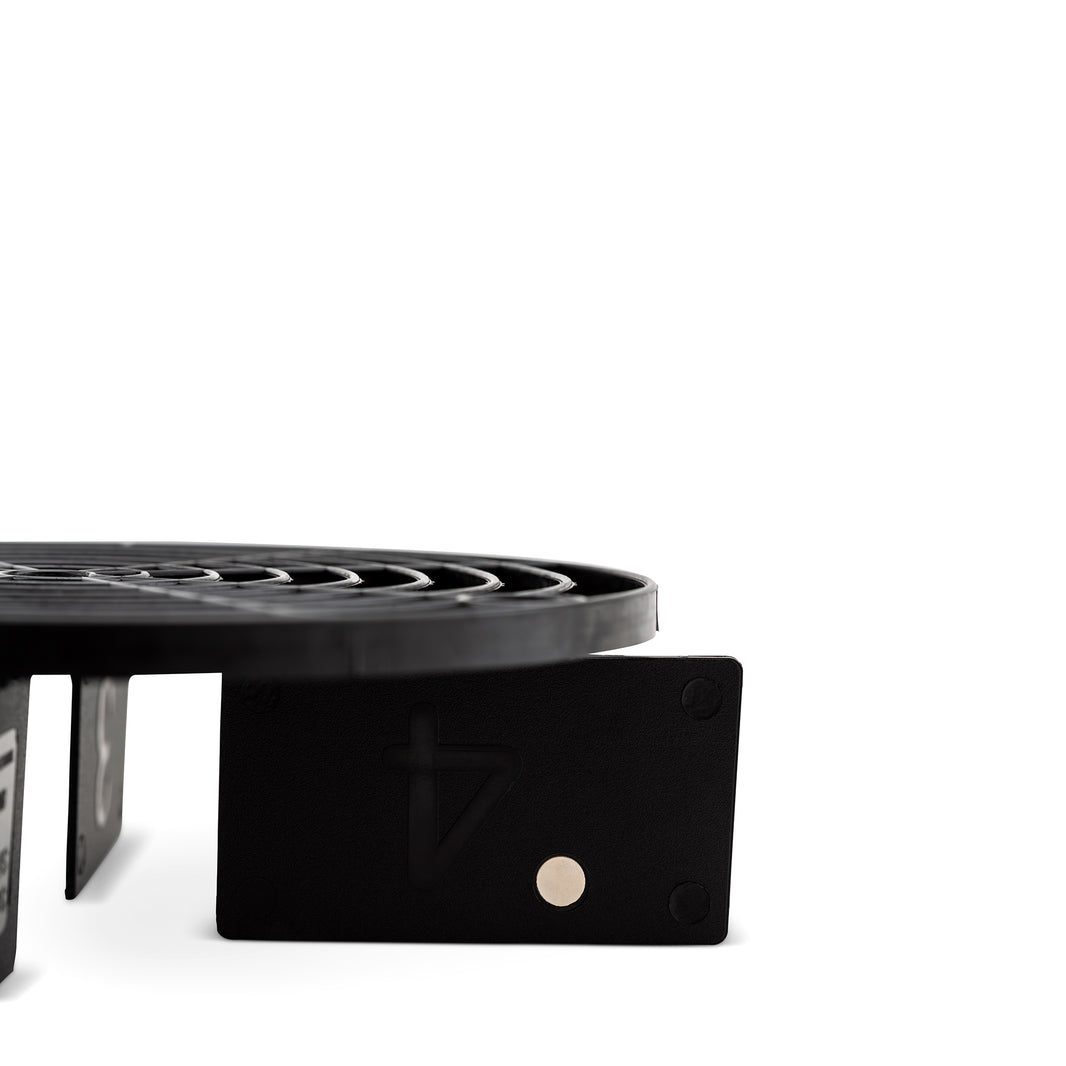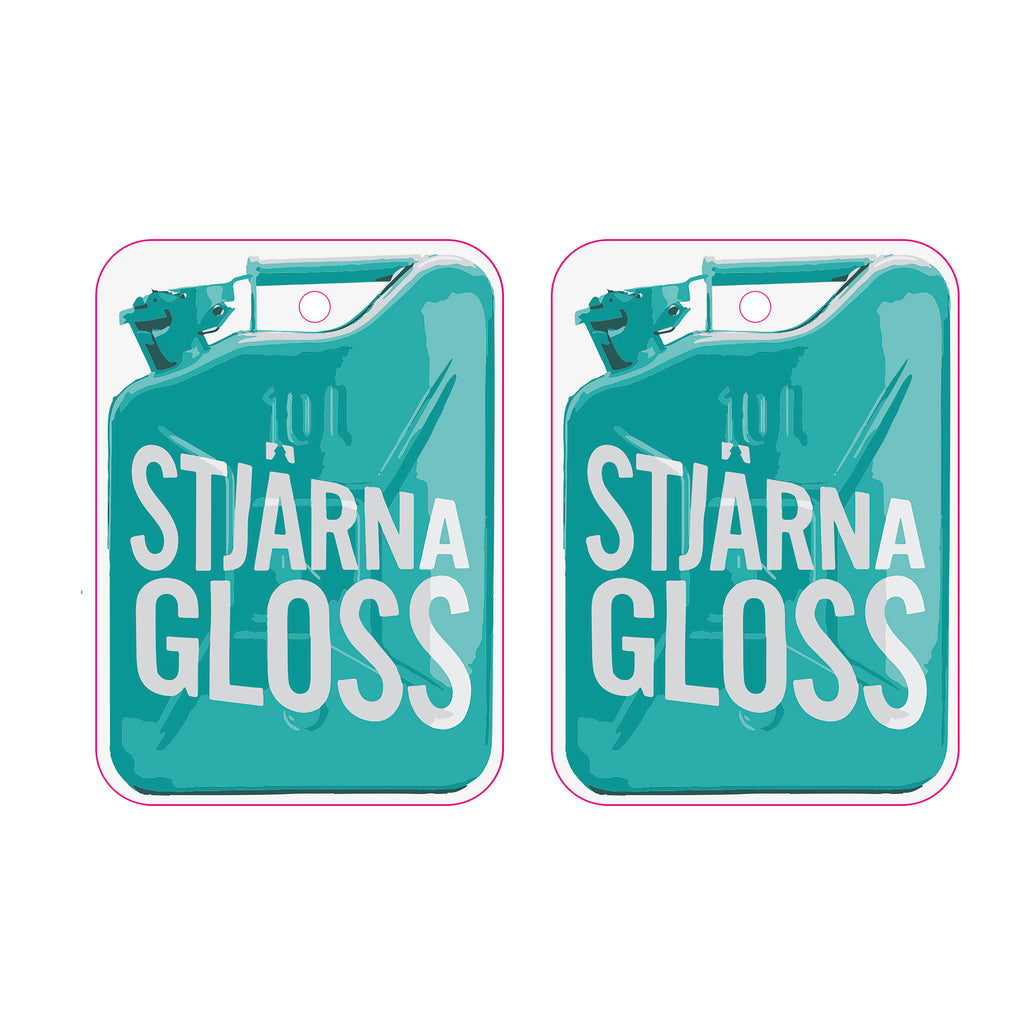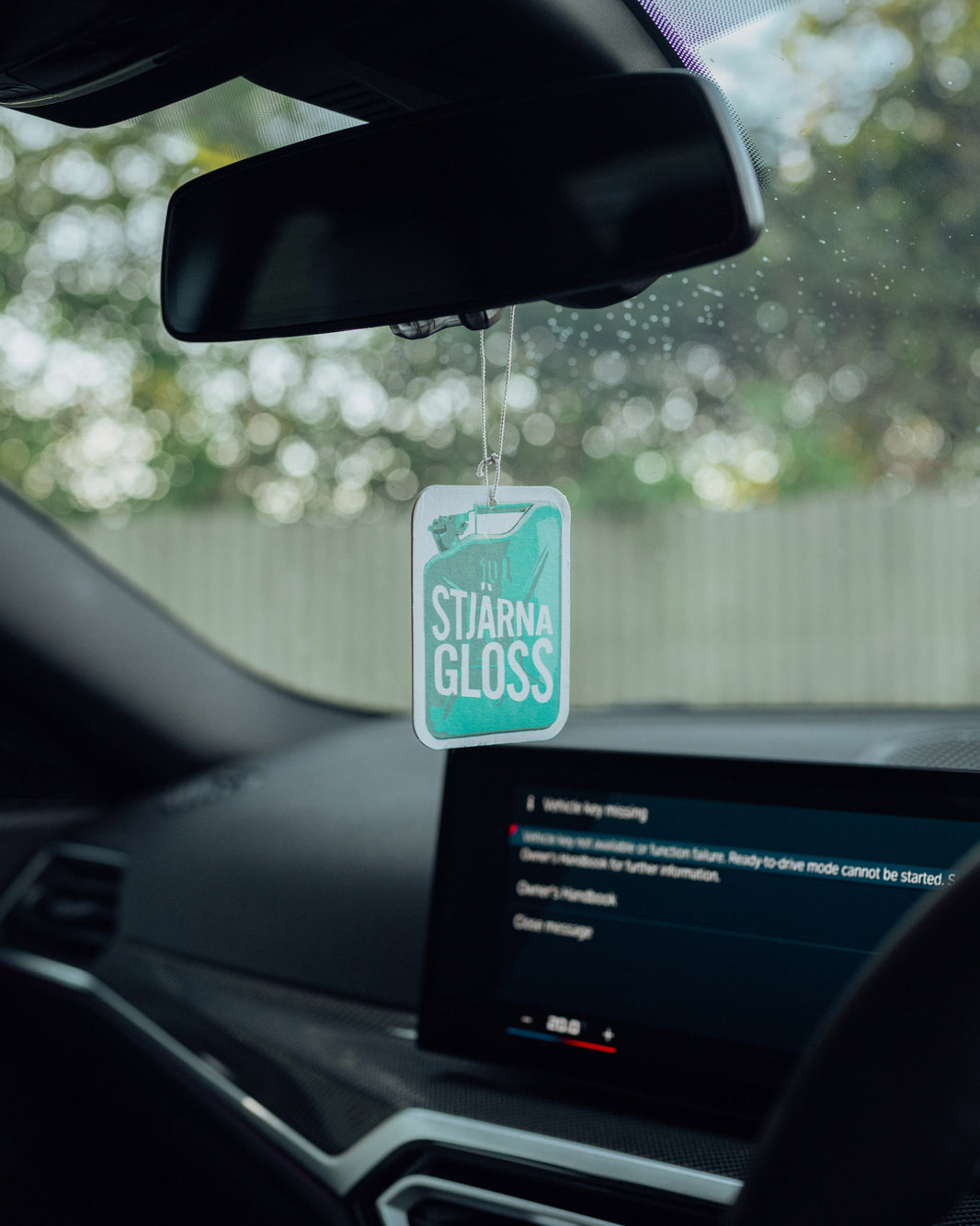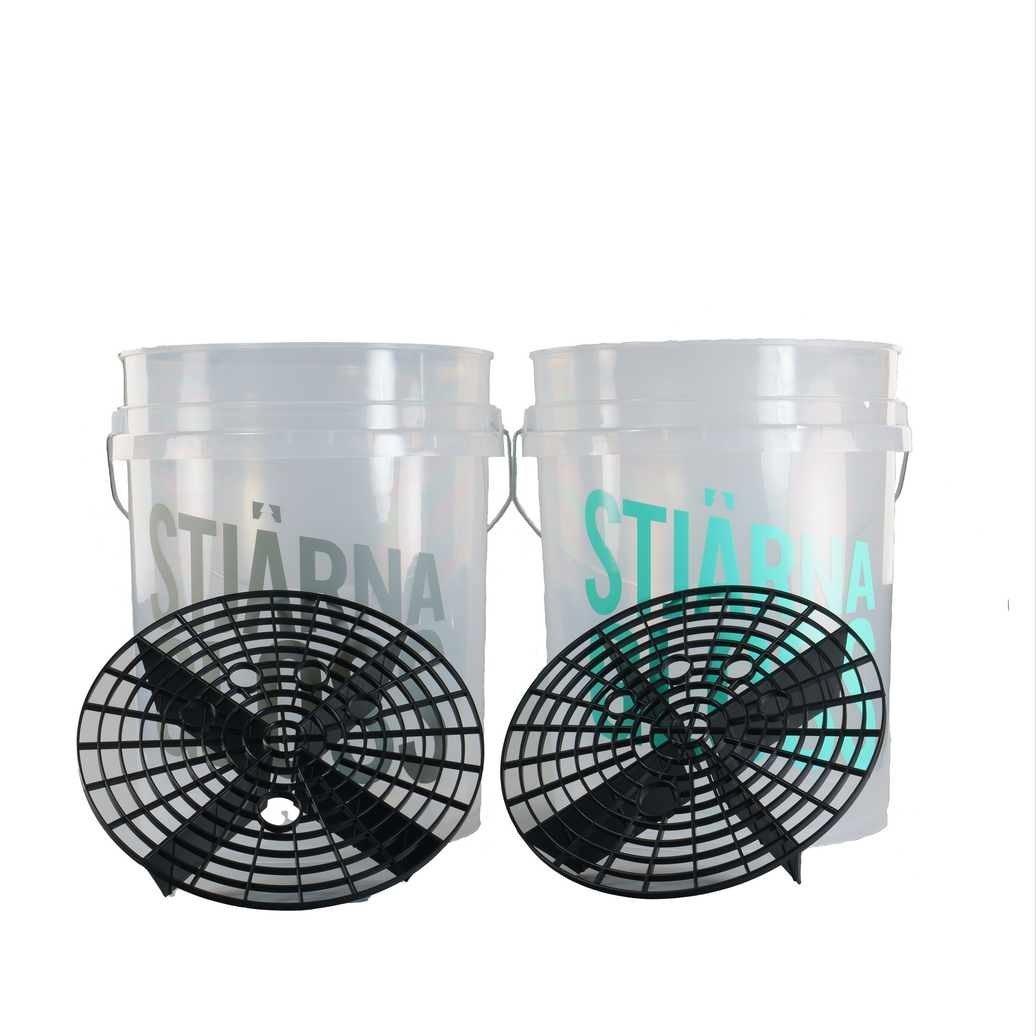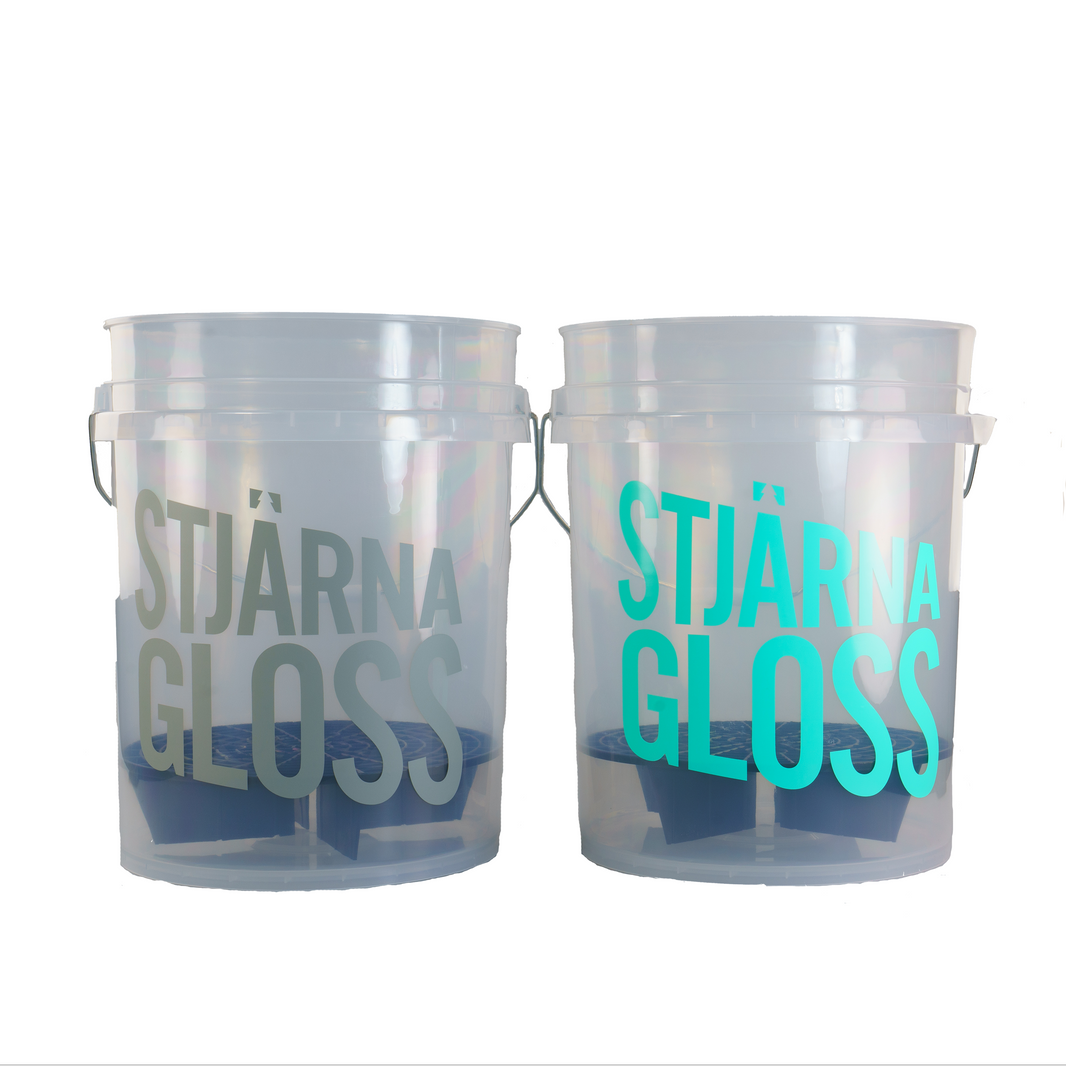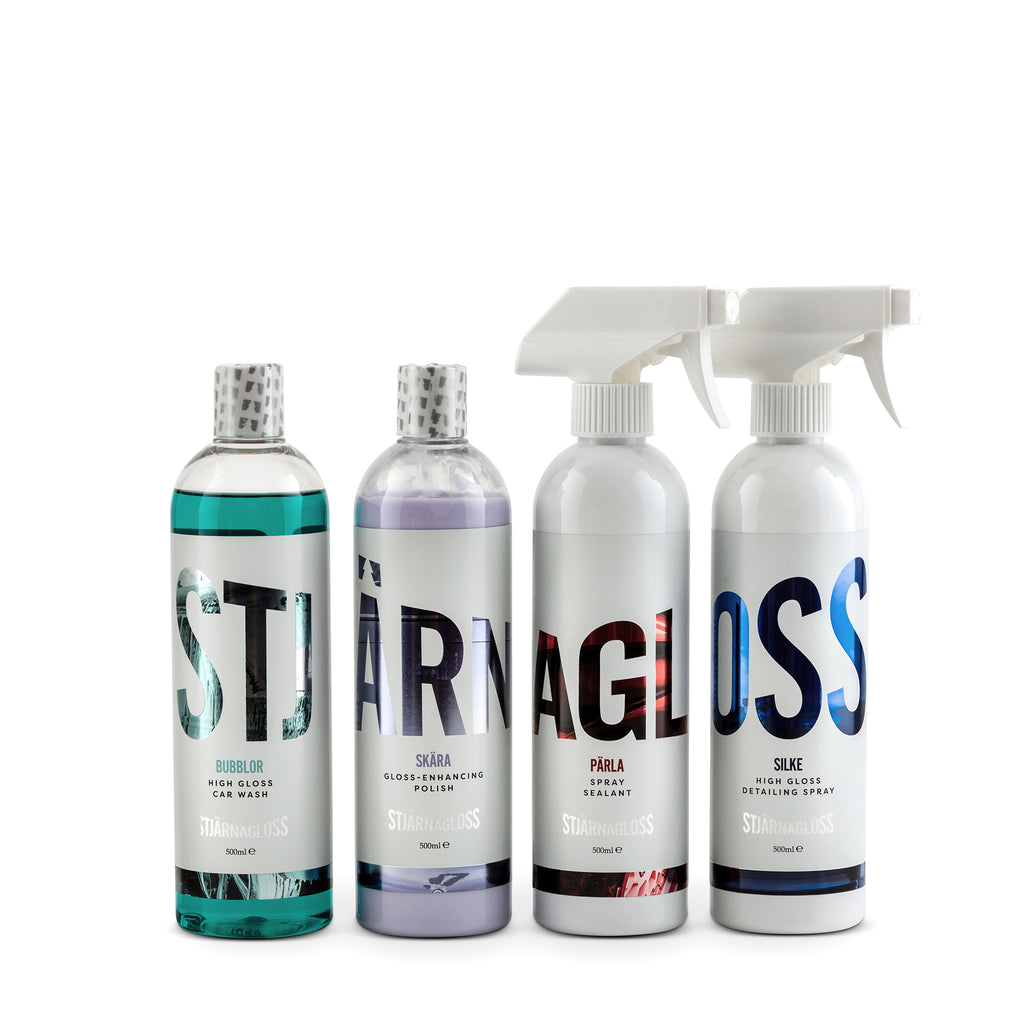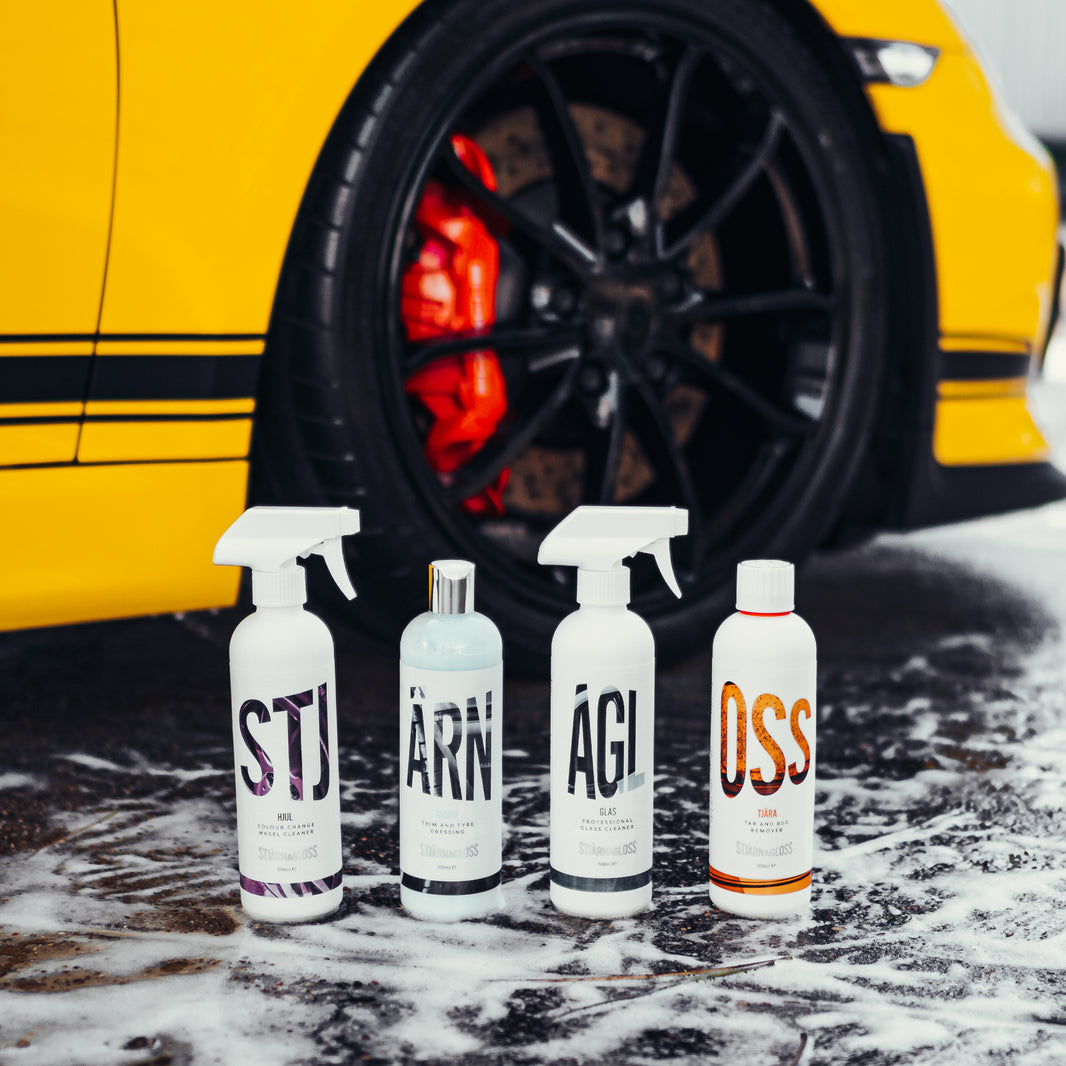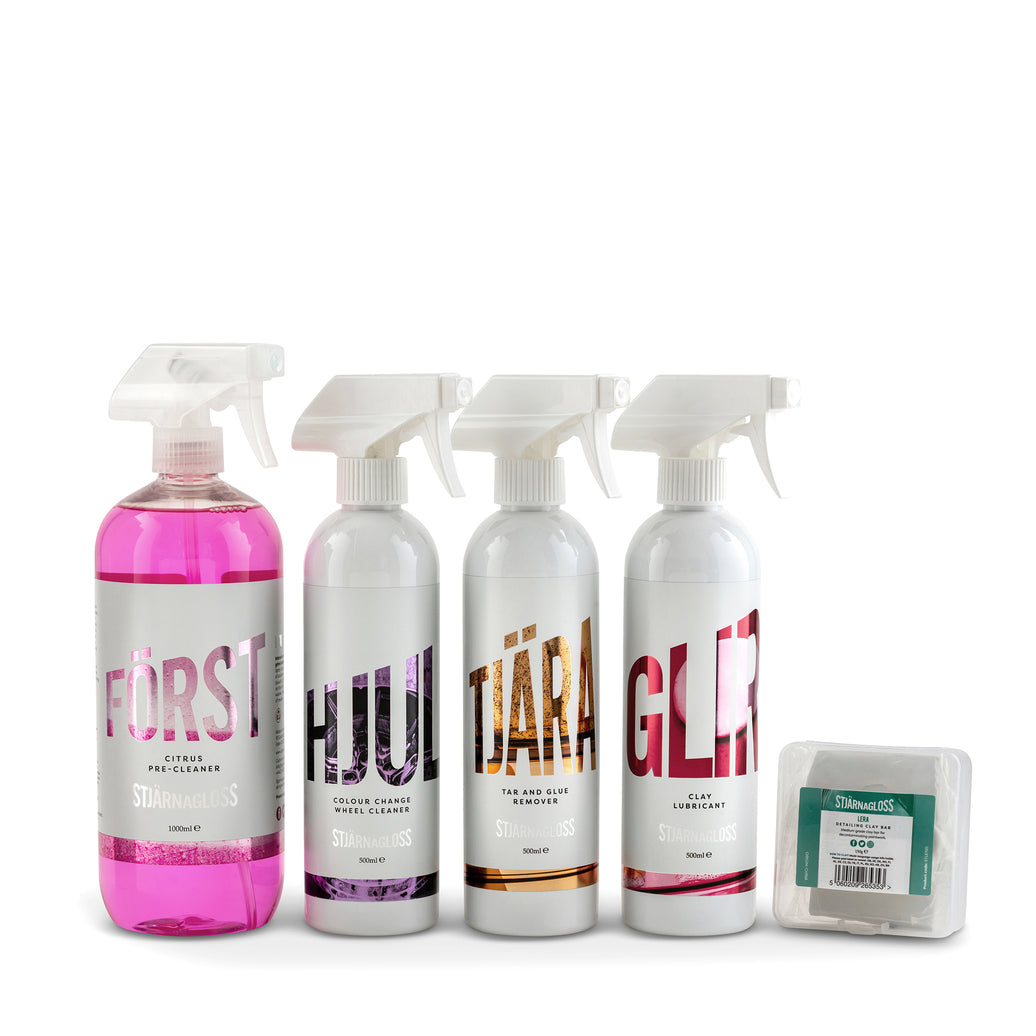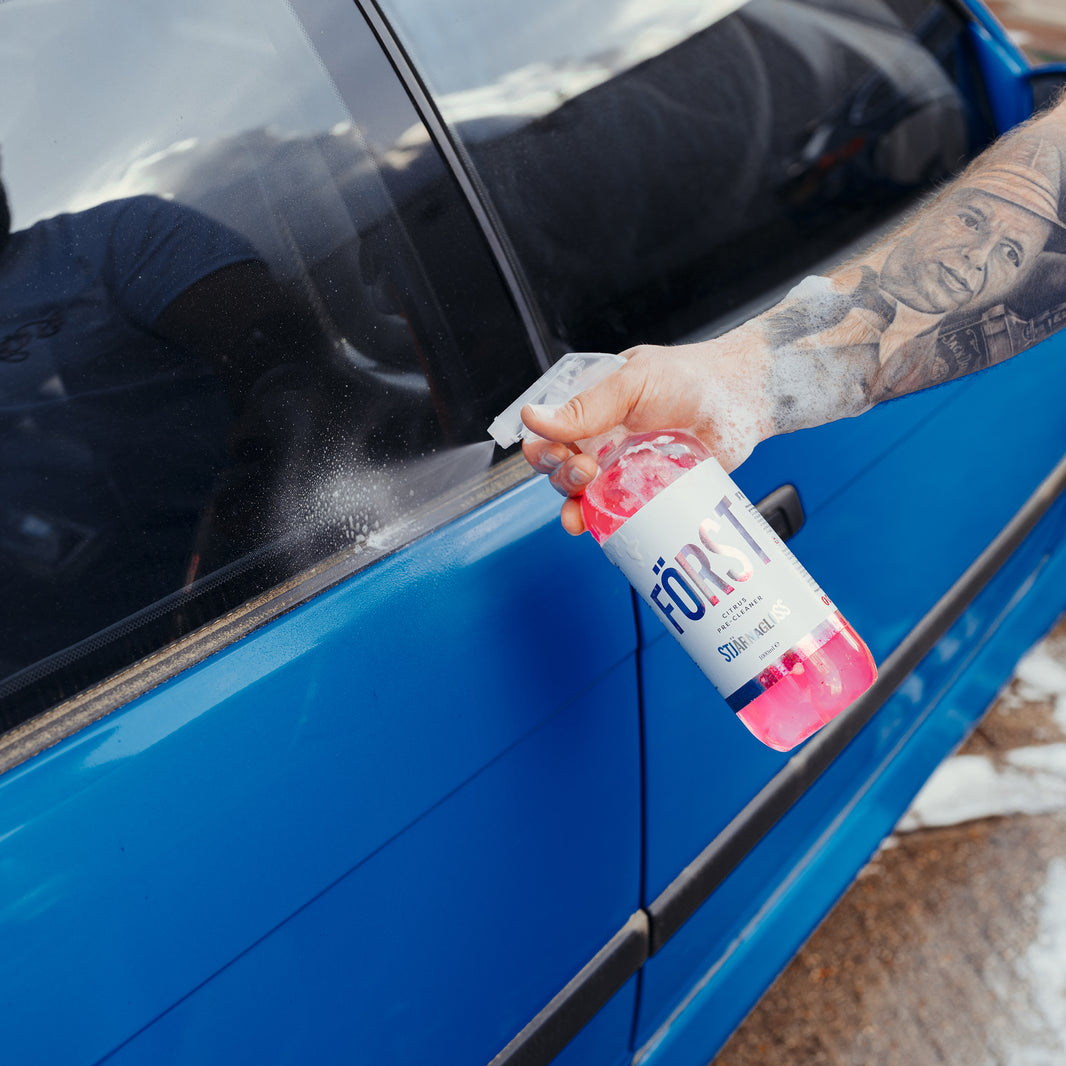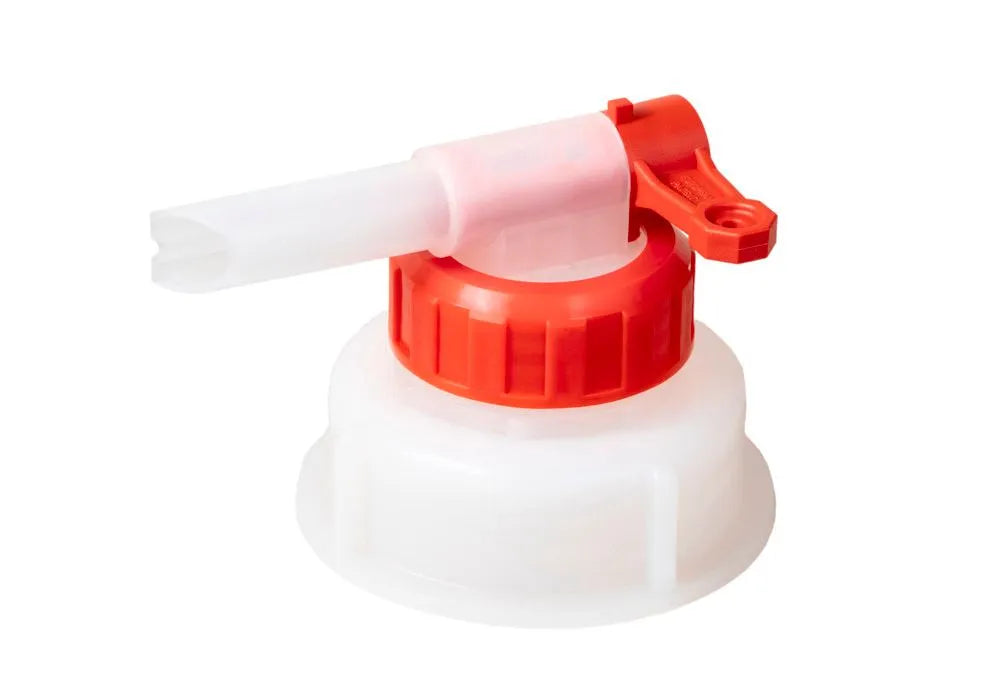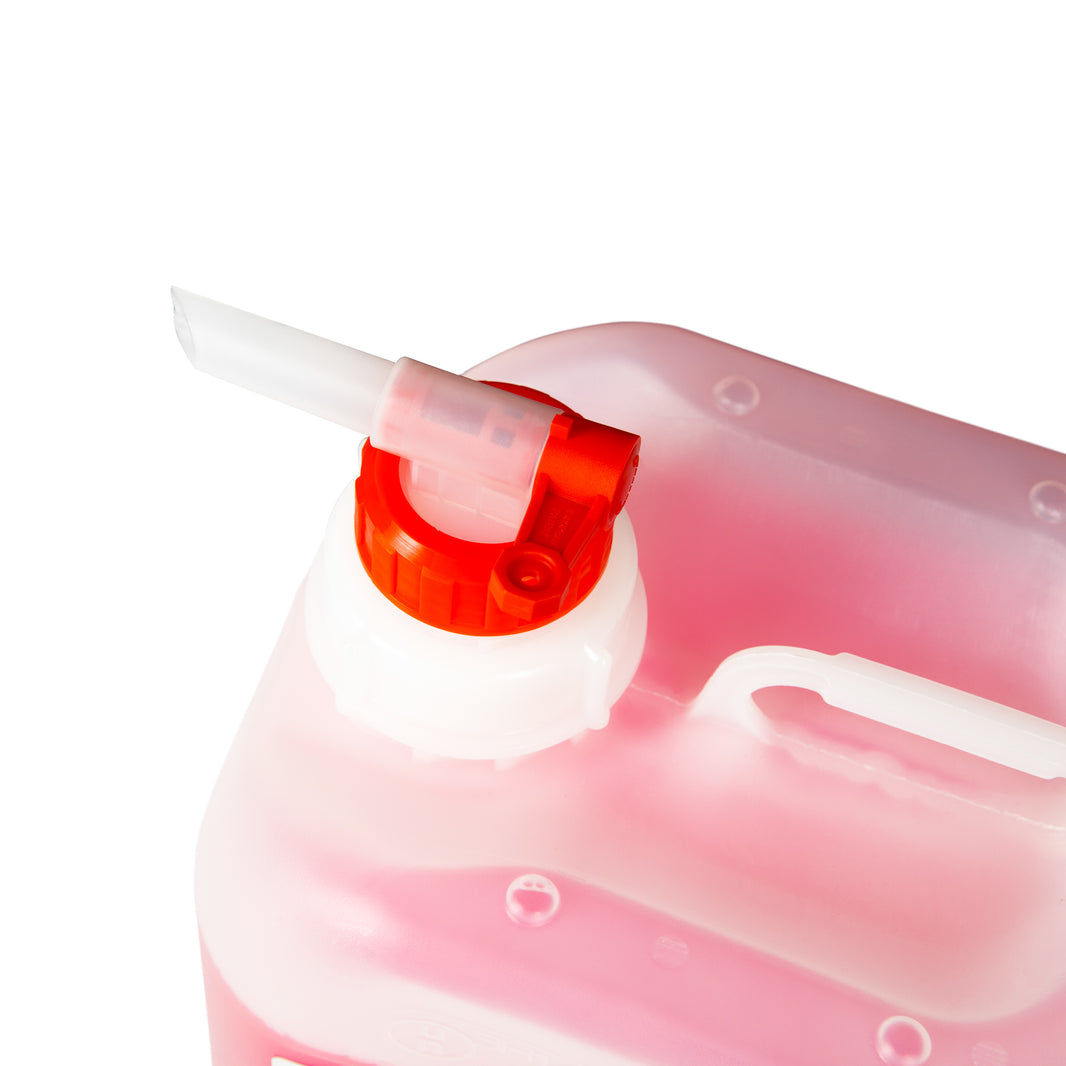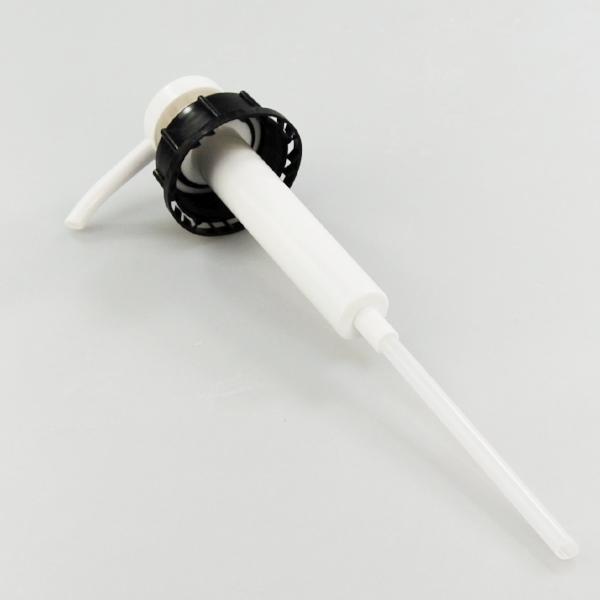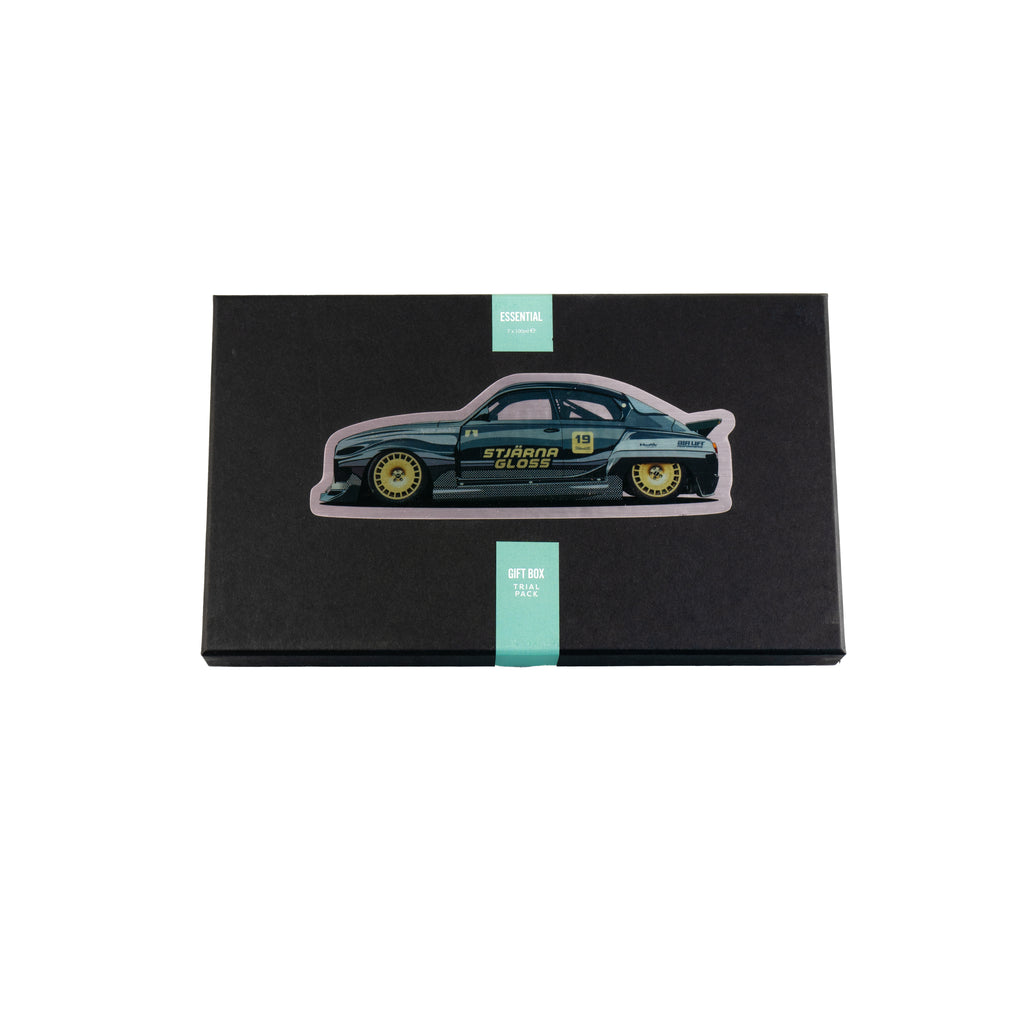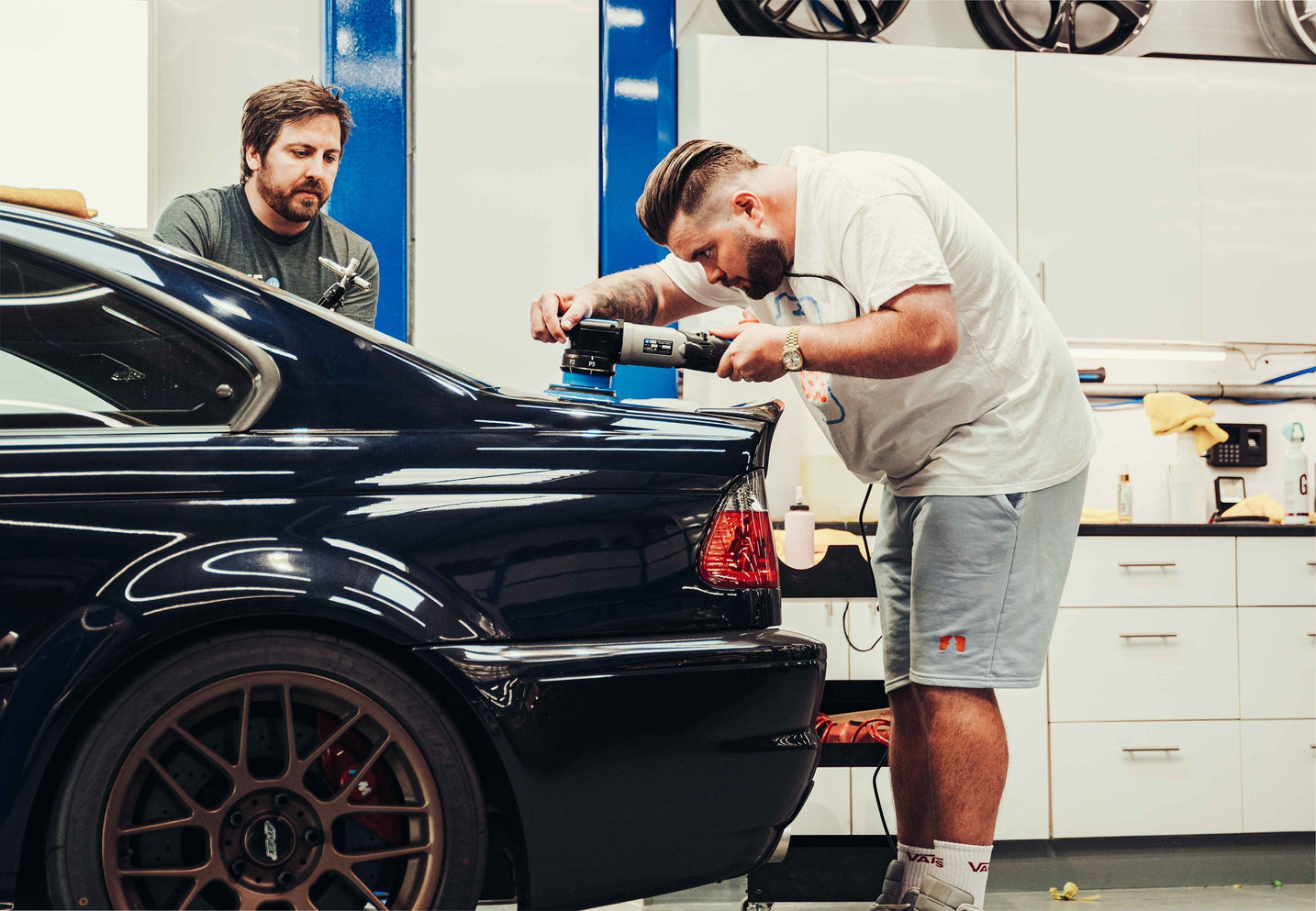What are paint defects (swirls, holograms, haze, pig tails, etchings, …)
After an amazing couple of days with the man, the myth, the legend Kelly Harris from Lake Country, we thought it was right to really break down all the types of paint defects and take the fear out of the unknown. Have a tea, suggest a digestive with it and enjoy the below.
Before you even think about starting with paint correction and polishing, you first need to understand the baseline of knowledge about why paint correction and polishing is done in the first place.
The majority of people think polishing is equal to making cars look better. Fundamentally, that’s correct. However, most people completely misunderstand what actually happens during polishing and paint correction – and therefore what it actually is that makes car paints look better. Because the single most important thing to understand when it comes to polishing and paint correction: you’re not removing paint defects, you’re removing paint!
To understand this very important principle, you have to know what makes car paints look bad in the first place: paint defects. Paint defects are all kinds of imperfections in a more or less perfect (paint) surface. Those imperfections come in many forms and (professional) detailers came up with a lot of funny names for them.
But no matter which paint defect we are talking about, it’s important to understand that they can be of different depth. In this respect, you need to know that every car’s paint today and generally speaking consists of three layers:
- The primer which sits on your car’s body (which you don’t see)
- The base coat (which gives a car its colour)
- The clear coat (which is transparent, protects the base coat, provides hardness and gloss)
Fun fact: on matte or satin cars, the paint structure is identical up until the clear coat. It’s only the clear coat that’s different on matte and satin cars as the clear coat on those is not flat, but actually rough. On the other hand, three-layer paint systems found on expensive Ferraris, Lamborghinis, Porsche, Aston Martins, but also some Mazdas, usually introduce an additional layer between the base and clear coat which consists of some sort of clear coat with added colour pigments which create an absolutely unique kind of look.
When facing older and/or cheaper cars, base and clear coat sometimes are just one layer. Painting techniques are ever evolving and car manufacturers are becoming more and more greedy, which is why the total amount or thickness of paint jobs nowadays gets thinner and thinner. Cars normally are delivered with something between 100 and 200 microns of paint thickness. Sometimes more, sometimes less. Usually, more expensive and one-off cars will have thicker paint jobs. A wonderful Königsegg for example has a boatload of paint on it, up to almost 1’000 microns! Even if this sounds like a lot, the total amount of paint on your car is thinner than a human’s hair! One micron is one-thousandth of a millimetre.
Now that you know what automotive paint consists of, let’s get through the terms and forms of paint defects:
- Scratches are thin (and mostly more or less straight) lines in your car’s paint. In fact, under a microscope, scratches are “craters” in which the paint of your car’s paint has been removed by an outside force and is therefore missing. How severe a scratch is (and the answer to the question whether it can be removed / corrected) depends on its depth: fine or light scratches only reach into the clear coat. Such scratches can be polished out. If a scratch is deep enough to have penetrated through the clear coat and into the base layer (the colour), it theoretically can be removed, but then you’ll levelling the paint area around the scratch so that no clear coat is left – which is not ideal for several reasons. A scratch that goes all the way through the clear coat and the base layer and into the primer or even the bare metal underneath it can’t be polished out – it needs a respray job.
- Swirls are (mostly light) scratches which follow a circular pattern and stem from improper washing techniques, automated car washes, or just mother nature’s influences when you drive your car. Don’t be an illusionist: even if you do everything right with your car wash techniques and use proper tools, you will still induce swirls over time – it will just take longer. Every mechanical influence on your car’s paint induces the risk of swirls. In this respect, swirls will more or less, sooner or later automatically become visible on your car’s paint, whereas holograms or haze are introduced by correcting and/or polishing the paint, i.e. through improper techniques or tools, untrained persons. The Ultimate Finish did a very good and comprehensive article on all of this if you want to dive deeper into it.
- Holograms (also known as buffer trails) are caused by polishing the paint – and normally only reach into the clear coat, but not deeper. Holograms are in essence “burn marks” caused by momentarily introduced too much heat, pressure, or abrasion in a small area of the clear coat in too little of a time frame. Technically, they are caused by the abrasives in your chosen polish or compound which had not enough time to break down. That’s why holograms typically occur if someone is using a rotary polisher with (very) high arm speeds and aggressive polishing / cutting compounds.
- Haze on the other hand occurs in a paint’s clear coat that has been polished, compounded or corrected. It’s mostly only visible to the trained eye and with the help of strong light sources when the polished paint doesn’t look crystal clear, but milky and hazy. Haze is created by too much heat to the clear coat and/or very aggressive polishing liquids or pads (like e.g. wool or microfibre pads). In the search for ways to give dual action / random orbital polishing machines the same cutting abilities as rotary machines, haze mainly became an issue when large throw dual action (DA) polishers (i.e. with 15 to 21mm orbital movements) along with microfibre pads for those machines were introduced. That’s why some people refer to haze as “DA holograms”.
- Pig tails are paint defects which look like, well, pig tails. They are created during aggressive compounding / cutting, but more likely during sanding a car’s paint with a DA machine and/or sander. The reason they occur is that too much removed paint residue builds up under your chosen pad / sanding disc in small spots which then are dragged along the paint with it – creating scratches. And because a dual action / random orbital machine follows a circular, overlapping motion, these scratches look like pig tails. If you are sanding a car by hand in straight motions, you will (most likely) still create deeper scratches, but they are straight lines and not pig tails. But it’s the same principle. Pig tails can be rather deep and require rather aggressive polishing methods to be removed, but they usually only reach into the clear coat.
- Etchings are caused by something that had enough time (and support by the sun) to work itself into your car’s paint. Those things can e.g. be bird poo, insect bodies, tar, glue, tree sap, chemicals or mineral deposits from water spots. Etchings usually only reach into the clear coat, but can also and in the worst case “burn” into the base layer itself. Because heat from the sun had something to do in the occurrence of etchings, it’s common that detailers face the issue that they think they removed etchings after polishing, as they don’t see them when the car is parked inside, but the etchings magically return when the car is parked outside in the sun and reintroduced to heat.
- Orange peel is not a paint defect as such. Under a microscopically, orange peel is a rough paint surface that is not perfectly flat. Instead, it resembles the skin of an orange, hence the name. Depending on the severity of orange peel, it can be almost invisible, but can also make the paint look dull and reduce gloss. Fact is that most people won’t even recognise it and it can only be removed by sanding with a flat block
- Stone chips are caused by stones (or other debris) that hits your car’s paint with high velocity. Stone chips can range from small “dips” within the clear coat all the way to actual chips of paint that’s missing so that the bare metal of your car’s body is visible.
- Clear coat failure looks like a snake that is skinning itself. In this case, the top layer (clear coat) is coming off and leaving the base layer (the colour) unprotected. This issue can’t be solved by polishing. Yes, you can make a car’s paint with clear coat failure look better and shiny again, but you’ll always see the difference between spots with and without clear coat on it. Clear coat failure usually demands a respray.
In theory, there are even more types of paint defects (like e.g. “crow’s feet”). To learn more about it, see this video:
https://www.youtube.com/watch?v=x2tFDe3Jt0c
By the way: anything that just sits on top of your car’s paint is not (yet) a paint defect. So, tar spots, tree sap, glue, or iron fallout are not considered paint defects as all of this stuff can usually be removed by the corresponding chemicals. With water spots it’s a little bit more difficult: as long as the mineral deposits which water spots leave behind just sit on your car’s paint, they can be removed by respective chemicals (usually acidic water spot removers). But as soon as these deposits start to work into the clear coat, they also work themselves into the category of paint defects.
You now know the different terms and categories of paint defects. This is important as every time you talk to experienced weekend warrior or (professional) detailers with questions related to polishing, these terms will come up.
However, what is even more important is the following: only defects which are in the clear coat of your car’s paint can be removed by polishing and or sanding. As said above, by polishing and paint correction you are permanently removing clear coat. You are not removing paint defects, you are removing the area around them, meaning you are levelling the clear coat to the deepest part of a scratch or swirls. Anything that reaches into the base coat (the actual colour) can still be polished out, but you then polish away all of the clear coat on that spot.
Paint defects which reach into the primer cannot be removed or polished out – they need a respray. Usually, stone chips reach at least into the primer if not even down to the bare metal of your car’s body.
Now, after reading this blog post, you may say that you don’t care for all of that and just want to know how to remove paint defects. We will tell you all about that in a future blog post – or you can just go ahead and grab yourself Stjärnagloss Skära or Glasyr.
Another important aspect to know is that the two terms “polishing” and “waxing” actually mean two completely different things, even if they are often used synonymously. What we refer to when we talk about a polish is a product with abrasives in them that is able to remove clear coat, hence correct paint defects. A wax is a protective product that you apply on top of your car’s clear coat. Yes yes yes, we know that there are things like “cleaner waxes” which are a mix of both, but let’s not overcomplicate things for now.
Quick detailers like Silke, spray waxes or spray sealants like Pärla, paste waxes, as well as sealants or ceramic coatings actually can induce “gloss” on a car’s paint. However, they don’t do this by removing paint defects or flattening the paint, they do this by temporarily filling light paint defects. Yes, flatter paint is glossier than a scratched up one and therefore you technically create gloss by a wax or other protective product with significant filling capabilities.
If we want to be very very boring and scientific about this whole thing, then we could use a gloss metre to proof and show that whilst (some) protective products indeed increase gloss readings on paint which is in a bad condition, they will never ever be able to do the same as a proper polish. Plus, only polishing reduces haze (which is caused by light refractions and reduces the optical clarity of paint), as no matter how good a product is a filling light paint defects, it will never do this to the extent that you won’t see those paint defects anymore. Shine a strong light on it or wait for the sun to come out and you’ll see those “filled” paint defects again.
Sounds complicated? Hold my beer, because now it gets even more confusing as there are things like glazes, All in Ones (AIOs), or Prewax-Cleansers. Some of those products fill and correct, some only fill, some fill and protect, and then some do everything (correcting, filling, protecting). Stjärnagloss Skära for example is sort of an AIO (more likely what you would call a pre wax cleanser) which means it very slightly corrects and fills, whilst Glasyr is a hybrid of a glaze and sealant, which means it fills and protects.
The main lesson to take away from this paragraph is that real shine and gloss is only achieved by removing paint defects instead of filling them. Glazes or AIOs are a shortcut to polishing your paint properly. This doesn’t mean that glazes or AIOs are bad things or cheater products. If you know what you do and are honest about it with yourself (and most importantly your customers), glazes and AIOs can lead to fantastic results in a very very fast and efficient way. However, and because you not completely remove paint defects but fill them, the effects you achieve will only ever be a temporary solution as those fillers will not last very long.
Now, after reading this blog post, you may say that you don’t care for all of that and just want to know how to remove paint defects. We will tell you all about that in a future blog post – or you can just go ahead and grab yourself Stjärnagloss Skära or Glasyr and make your car look awesome.
Author: Andreas Schwarzinger
